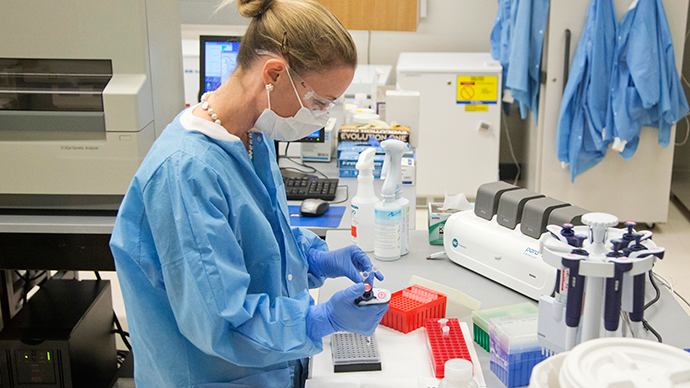First ever time-lapse of white blood cell dying helps scientist discover new immune alert system (VIDEO)

Australian and American scientists have recorded for the first time ever the death of a human white blood cell, ascertaining that the dying cell tries to warn the immune system of a pathogen’s presence.
Scientists now have a better understanding of the immune system’s mechanism and have made several significant findings.
The discovery was made by a group of scientists from La Trobe University, Melbourne, Australia, led by Georgia Atkin-Smith, a cell biologist and PhD candidate, in co-operation with researchers from the University of Virginia in the US.
The results of their study were published in the Nature Communications journal.
White blood cells are “guardians” of human health – immune system cells that fight bacterial, fungal and viral infections.
The process of a human white blood cell’s death has never been captured on video before. Up to now, scientists have only worked with dead cells.
The group used a microscope and time-lapse photography, which allowed them to capture very fast events by taking hundreds of photographs per second. They viewed images at high speed and managed to record every stage of the white blood cell’s demise.
As a result they discovered that a white blood cell always goes through three regulated stages in its death: bulging, exploding and breaking apart, thus showing that the cell death is highly controlled as well as disproving an earlier hypothesis, according to which the cells fall apart randomly.
READ MORE: MERS death toll reaches 16 among 150 confirmed S. Korea outbreak victims
“After the cells bulge they go through this spectacular explosion where they push out large-beaded necklaces up to eight times the size of the cell,” said Georgia Atkin-Smith, the leader of the team.
The scientists also discovered that the dying cell ejects molecular chains described as “beaded necklaces,” which, according to the scientists, may possibly contain molecules that help the cell to communicate a warning signal to the immune system that a pathogen is present.
“So when the cell starts to die it forms these lumps which push outwards and when the cell then explodes, it shoots out long ‘beaded’ protrusions which look like a necklace, which then breaks apart into individual ‘beads’,” Georgia Atkin-Smith said.
“The cells around them can easily engulf these smaller pieces. But we also think there are certain molecules in the beads that, when eaten by a live cell, can signal back a warning to other white blood cells to say, ‘Look out, there may be a pathogen coming to get you’,” she added.
READ MORE: ‘Huge paradigm shift’: Biggest cancer breakthrough in 40 years sees tumors disappear
This discovery gives scientists an insight both into how the immune system works and how pathogens facilitate disease spread.
“It could be that we’ve identified the mechanics of how dying white blood cells go about alerting neighboring cells to the presence of disease or infection,” said Dr Ivan Poon, the co-leader of the study.
“Alternatively, we may have discovered the transportation mechanism for a virus to infect other parts of the body,” he added.
READ MORE: Virus as medicine: Genetically engineered virus can cure cancer, scientist learn
Ms Atkin-Smith also confirmed this. She told the Australian Associated Press: “When bacteria and viruses invade our bodies we think they may be able to take control of this process and hide in the beaded necklaces and move throughout the body."
By gaining a deeper understanding of the newly discovered processes, the scientists hope to better adapt human healing mechanisms to different diseases and improve medical treatment.
“Importantly, we’ve also discovered drugs that affect this process so, once we know more, we may be able to either suppress or enhance this action,” said Dr Ivan Poon.
“We found that a commonly used antidepressant can block this whole process and an antibiotic can promote this event,” said Ms Atkin-Smith.












